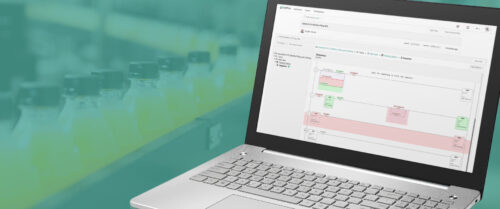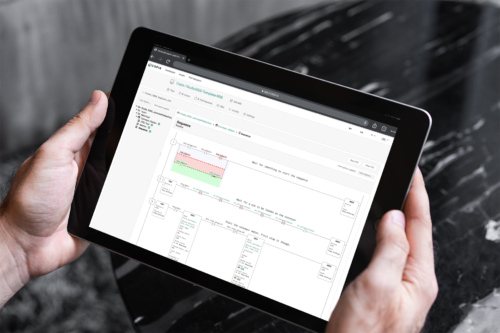Leveraging the economics of small PLCs
Can't afford a high-end PLC, but still need the functionality?
It is becoming increasingly difficult for manufacturers to maintain a competitive position unless they embrace automated control. Managing manufacturing costs is critical — especially in today’s economy. The quality and repeatability that automation inherently brings to processes helps reduce costs and improve efficiencies in manufacturing.
During an economic downturn, small PLCs play a critical role in the solutions created by organizations ranging from machinery OEMs to industrial end users. When properly implemented, small PLCs — those with I/O typically under 128 points — can help control costs, improve efficiencies and reduce heavy recurring software and support expenses.
Small PLCs excel at monitoring temperature, high-speed counting, precise timing, speed and virtually anything else a large PLC can do. Small PLCs typically provide their automated functionality through ladder logic, although other languages are available. Ladder logic is a language originally derived from the logic used by electricians to combine the functionality of discrete timers, counters and relays.
Software provides a view into an integrated representation of different types of hardware and their otherwise complicated interconnections, and provides a means to easily configure each device. While physical inputs and outputs between real world devices and the PLC are required, all of the interconnections between the embedded timers, counters and PID blocks, for example, are created and monitored within the software.
For example, engineers have for many years used an output from a single counter within the PLC to activate physical outputs, as well as act as inputs to multiple embedded devices, perform mathematic functions on stored data and send messages to other devices through communication ports. Although tried and true, that simple but effective technique is still used.
The ability to “virtually wire” these automation components together helps replace miles of wiring, eliminates hours of troubleshooting and seamlessly integrates the capabilities of these devices together in a much more user friendly way. Literally hundreds of timers, counters, inputs and outputs can now be held in your hand. And unlike the solutions comprised of discrete devices, PLCs can communicate to one another and to computers so you can monitor their activities and the processes they control from almost anywhere.
Less is more
For several years, industry studies show that PLC sales are migrating away from large PLCs that run plant-wide automation systems, and toward local and distributed control. A NEMA market comparison for PLC sales dollars from 2002 through 2007 indicated a growth of 40% for nano PLCs (less than 40 I/O points) and a growth of small PLCs (between 40 and 128 I/O points) of 125%, while indicating a decline in sales dollars of large PLCs (more than 128 I/O points) of 9% for that same time period.
Much like the large expensive PLCs of the 1980s were replaced by mid-sized PLCs in the 1990s, those mid-sized PLCs are now being superseded by even smaller controllers that are faster, incorporate advanced features and come at a lower cost. The functionality that prompted the purchase of large PLCs in the past is now commonly available in small PLCs. As end users and OEMs evaluate the declining reliability of older systems, cost of replacement parts, legacy support and the overall risk associated with obsolescence, many are switching to more capable and less expensive small PLCs.
Michael P. Foley is product manager for programmable logic products at Eaton Corp.
Do you have experience and expertise with the topics mentioned in this content? You should consider contributing to our CFE Media editorial team and getting the recognition you and your company deserve. Click here to start this process.





